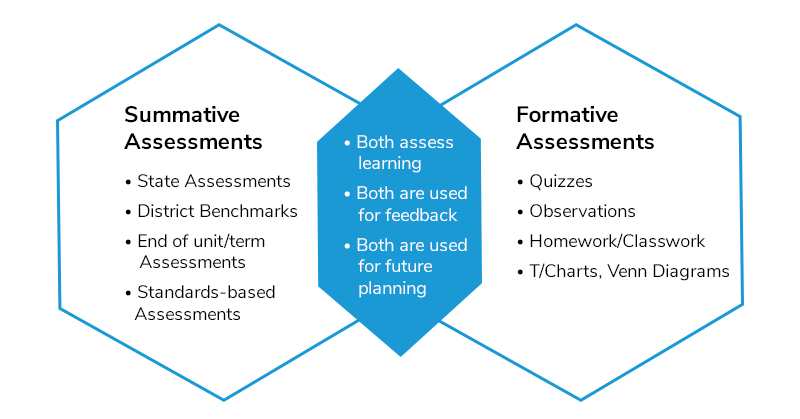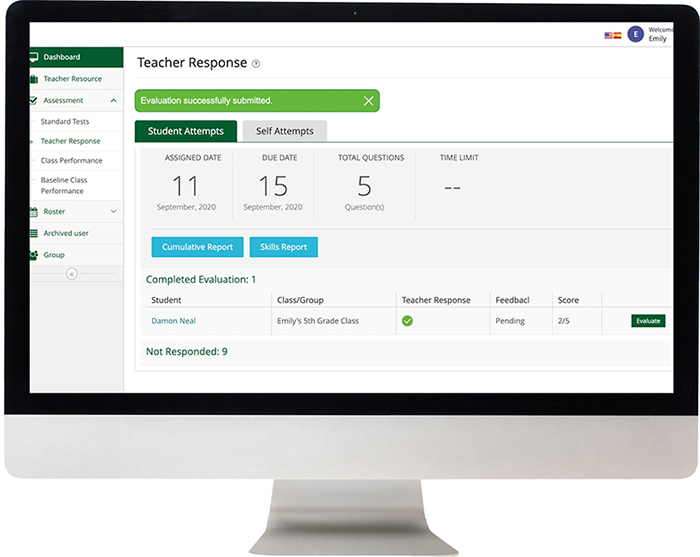Assessments are an indispensable part of the learning and teaching cycle. It not only measures learning outcomes, but also helps make teaching more responsive. Assessment best practices help make it an integral part of the learning cycle, such that both teachers and students are able to monitor learning. For teachers, it offers the means to make data-driven decisions regarding the next steps in teaching and provide support. For students, it offers the opportunity to discover areas of strengths and weaknesses, motivating them towards self-directed learning.
Mindful assessment helps with all of this, while offering timely and individualized feedback. Given that different students have different styles of learning, with each one understanding and assimilating concepts at their own pace, assessment should allow personalized feedback, based on the learning maturity of each student. Some of the key best practices to ensure such assessments is to:
- Integrate assessment into the learning and teaching cycle
- Administer ongoing, regularly paced assessments that help teachers and students monitor themselves.
- Offer teachers the right inputs to plan their instruction.
- Provide regular progress reviews to motivate students in the right direction.
Now, the question arises which style of assessment would best fulfil these needs. The choice is really between summative and formative assessments. Here’s a look.

Summative Assessment
The main objective of summative assessment is to evaluate learning at the end of either an instructional unit or a specific period of time (such as a term or semester), by comparing how each student has fared against a benchmark or standard. These are often high-stakes assessments, such as the SATs, which means that students tend to prioritize them over formative assessments. However, feedback from summative assessments is difficult for both students and teachers to use to guide their efforts to improve performance in future.
Some key examples of summative assessments include midterm or final projects or exams, district benchmarks, chapter tests and scores that can be used to hold students or schools accountable.
Formative Assessment
This type of assessment can be both formal and informal, scheduled and spontaneous. They can be an impromptu class quiz or a more structured evaluation, such as students submit assignments for critique and feedback, which can then be included as part of the student’s portfolio. With this type of assessment, the teacher offers feedback to students on how they can improve their efforts.
Formative assessments offer the opportunity for students to receive ongoing feedback, which helps them focus their efforts in the right direction. It also provides the faculty with insight regarding where each student requires support. Formative assessments can also be peer-led or self-assessments.
Which is Better?
Relying solely on summative assessments offers students only a grade at the end of a unit or period of study. There is negligible feedback to help students improve their learning style or focus to ensure better learning outcomes.
- So, the biggest difference between formative and summative assessments is when the evaluation takes place within the learning process. Formative assessment is an ongoing activity that takes place during the learning process, while summative assessments take place at the end of the learning process.
- Another major difference is the strategies used to evaluate students’ learning. With formative assessment, the aim is to monitor the learning such that students can be motivated to direct efforts in specific directions, while teachers can offer individualized support. Summative assessments aim to provide grades to evaluate whether the student has successfully achieved the learning goal. So, the difference lies in whether the purpose is to improve learning or evaluate learning outcomes.
- Since formative assessments occur numerous times through the learning process, the type of evaluation methods used also differ between the two types of assessments. For summative assessments, the size of evaluation is much larger to cover the entire syllabus of a subject, while formative tests cover short portions of the syllabus or even a part of a chapter.
Therefore, both have their own benefits for education and the right balance between the two types of assessments can offer the best academic results for both students and teachers. Since formative assessments are not high stakes tests, students can get into the habit of applying their knowledge in an evaluation setting in a risk-free, and therefore stress-free, environment. This could prepare them better for the final summative assessment.
The changing times have highlighted the need to move both learning and assessment to the digital setting. EdTech tools offer excellent ways to administer, score and share feedback associated with both formative and summative assessments. The use of video-based and interactive assessments can make the entire process engaging and motivating for students. Teachers can also make use of analytics and customized reports to create personalized learning paths for students, with the help of the right digital learning platform.
MagicBox™ is an award-winning end-to-end platform with a powerful assessment engine that eases the process of both educators and learners. To learn more about this robust feature, contact us for a demo.
















